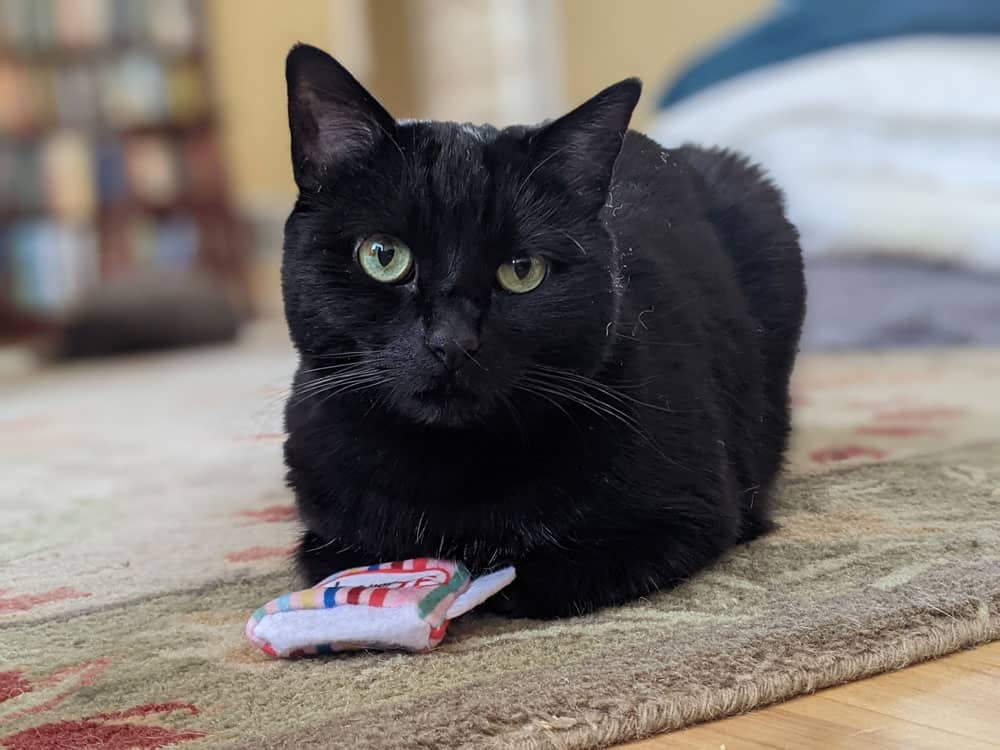Much about the way that a cat has positioned their body will tell you their emotional state and alertness level. The position of the ears, pupils, whiskers, tail, and general body posture all reveal how happy, scared, alert, or sleepy a cat is.
Cats spend most of their days alternating between napping and observing their environment. When awake, your cat may assume a variety of sitting positions.
Loaf Position
The loaf position is a relaxed sitting posture for cats.
When cats are relaxed and resting, but also want to be able to stand swiftly, they assume the loaf stance. The stance protects the sensitive underbelly of a cat while also allowing them to relax. Your cat may snooze in this position, but it will not fall into a deep sleep.

Relaxed But Alert Sitting Position
Cats that sit with one paw stretched out are relaxed but alert. Similar to the loaf position, this position allows the cat to quickly move if needed.

Alert and Watchful Sitting
When cats sit back on their rear legs with their front legs straight, this is an alert position. Often, the tail will be slowly swishing back and forth and the ears will be in an upright position.
This cat is happy and paying attention to what’s happening around them.

Couched Sitting Position
Cats that are crouched are typically on the defensive. My cat sometimes assumes this position after tussling with one of my other cats.
By crouching down, your cat protects their vulnerable underbelly. Your cat’s pupils may be dilated with their head tucked low. Their tail may also tuck itself around the cat’s body. This is often a position that says, “stay away from me”.

A crouching cat that is fearful will attempt to make themselves as small as possible. Their ears may be flattened and they may try and hide.
Hunched Position
Similar to the crouched position, the hunched position is a defensive position. This position, however, may indicate that your cat is ill or injured. If your cat’s suddenly starts crouching more than usual, or you are concerned about your cat’s wellbeing, consult with your vet.







